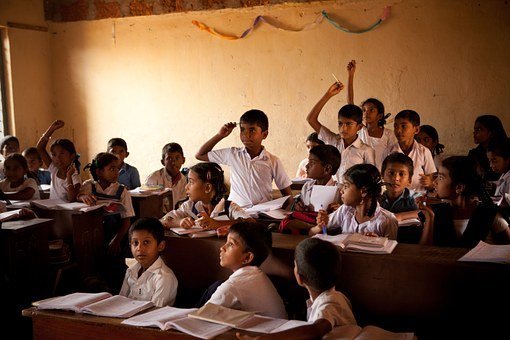I hope you find this piece Informative, Educative and Insightful
Children are creative in their work and play. They enjoy building houses with sand, constructing vehicles using cornstalk or some other sticks. They imitate the sounds of vehicles or animals. They often express ideas in art from either by drawing or painting. They have no problem playing the roles of adult members of the community. Teachers should continue to encourage this power of imagination and creativity among children in educational process.
Similarly, children ask a lot of questions either from their teachers, parents or even their peers. They ask such questions because they have the desire to learn and solve their every day problems. Creativity and questioning methods are of great value to the social studies teacher.
You need to understand that these methods are not to be used only on special occasions or be carried out by pupils. You should organize and help pupils execute these activities. This article seeks to expose how to use these methods in your social studies class as a teacher.
By the end of this series, you should be able to:
- define creative activity and questioning methods;
- state their importance in social studies teaching
- identify the various types of creative activities and questioning methods,
- initiate creative activities and create good questions for use in your classroom, and
- organize creative activities session in your class and ask good questions.
Creative Activity Methods
One of the most significant changes that have occurred in teaching over the last one and half-centuries, has been the introduction of activity methods into the classroom. recently, the idea that learning involves the development of abilities has given rise to the use of creative-activity methods. You need to realize that these methods are not to be used only on special occasions neither should you think that only pupils can use them. You can organize, assist and help, but the activities should be done by pupils. Creative activities are intended to develop pupils intellectual imagination skills. Creativeness are not to be given to pupils as rewards, they should be given to the whole class.
Creative activity methods can therefore be described or defined as the group of methods which are used to develop pupils' creativity. they fall into the categories which will be discussed in the following sections.
Types of Creative Activity Method
(1) Drawing and Painting: Drawing can be done with pencil, pen, charcoal, chalk or crayon. Drawing can be enjoyed by even young pupils just entering school. Pupils or children make drawings with their fingers or sticks on the sand or clay. You should encourage children to express their ideas in drawing. Children should be encouraged to paint their drawing and this should be encouraged in the early stage of schooling. Children love drawing and painting, you should provide the materials for this activity or ask the children to bring them from home.
(2) Posters: A poster is a large piece of paper on which a picture is drawn to give information, or words or to convey a message. There are posters that blow up a message focusing on the words and spotlighting the essentials of what is being said. Another type of poster may illustrate the message graphically with few or no words at all.
The visual importance of posters is more measurable than aural or any form of presentation. The materials for making posters need not be elaborate or expensive e.g crayons and any available type of paper, magic makers, inks paints coloured chalks etc.
(3) Collage: Collage is putting together materials with paste and adhesive or gum. It refers to putting paper together in some kind of design or pattern. The material need not necessarily be paper. It can be cloth, wood, cardboard, egg shells, rocks, pebbles or other natural materials, cut-out pictures, designs, patterns, or photographs. The purpose of collage is to represent a story or message in a powerful and creative way. There are two types of collage, namely, the use of photographs or picture-cuttings from magazines, phamphlets etc. The other form is gluing objects to a background and it uses discarded pieces of plastic, nuts, bolts, string or any suitable.
(4) Creative Writing: Writing compositions involve putting ideas and thoughts on paper in some order. Creative composition involves doing things in a new or different way. At the primary school level, this technique can be divided into three forms of writing: Stories, description and poetry. Writing stories is useful even with younger children if they can be encouraged to d so using their own experience.

Simply said, qualitative education refers to the quality of education that allows a person to contribute to society. Individuals, communities, and society benefit when they have access to high-quality education. I'm a law student, and I use this website to assist me to write essays. Essays on Supremacy of EU Law may be found at https://writix.co.uk/essay-examples/supremacy-of-eu-law This means that the EU's actions are based on treaties that have been democratically ratified by its members. EU legislation aid in the achievement of EU treaty objectives and the implementation of EU policy.